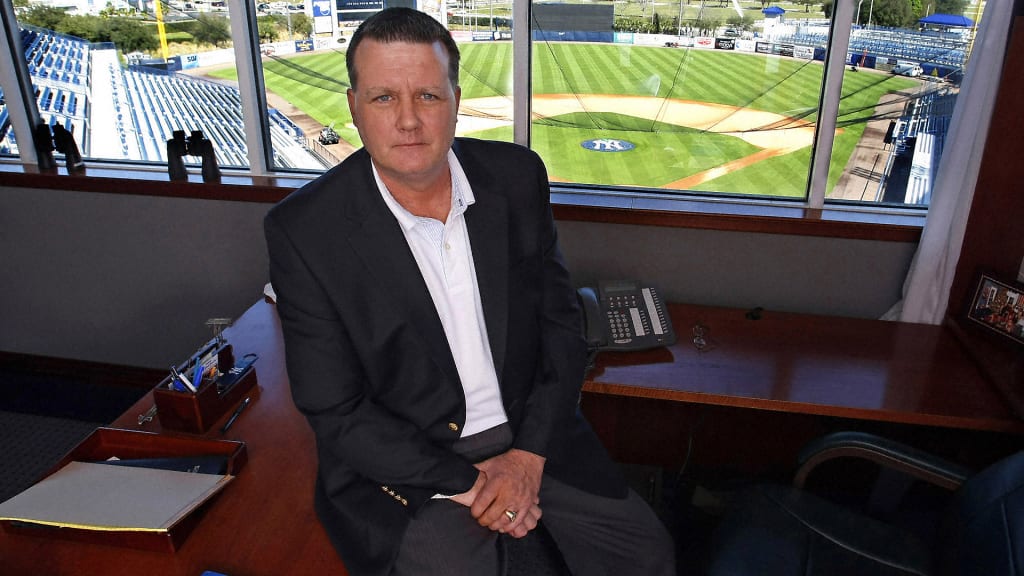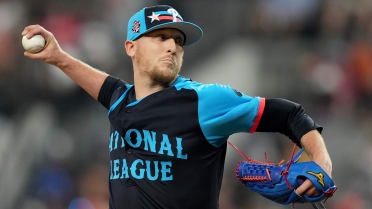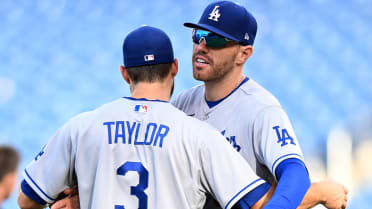Yankees Magazine: All You Need Is Love
Hank Steinbrenner eschewed the limelight for something far more meaningful

He was born with an unquenchable thirst for knowledge, into a family with an insatiable desire to win. With those two forces forging the steel rails on which his life tracked, Hank Steinbrenner never stopped pursuing his passions, with impressive accomplishments in several different arenas to show for it. But for the oldest of George Steinbrenner’s four children, it wasn’t his contributions to the Yankees, or his success as a thoroughbred horse breeder, or even his foray into the world of auto racing that he was most proud of.
“There was nothing in the world more important to him than his kids,” said Hal Steinbrenner, the Yankees’ managing general partner. “He tried to be there for his kids as often as he could and always made sure they were looked after and taken care of. He lived for his kids. And I think that’s about the greatest compliment one could bestow on another human being.”
When Henry George Steinbrenner passed away on April 14 at the age of 63, tributes poured in from all over, and dozens of media outlets dedicated lengthy articles in memory of the man who, in his 13th season as Yankees general partner and 11th as co-chairperson, had helped oversee all areas of the team’s business and baseball operations.
But Hank Steinbrenner also valued his privacy, and he fought to protect his children from the glaring spotlight that can come with owning the biggest sports team in the biggest media market in the world. So while there was much written about Hank’s career in the public eye, those closest to him paint a fuller picture, of a gentle soul who was always considerate of others, a kind and caring man who had a way with children, a down-to-earth guy who loved history, music and cars -- and who was glad to talk about anything with anyone.
“Whether you were an usher at Yankee Stadium, a groom at the racetrack or the vice president of the United States, he dealt with you in the same fashion,” said Tom Ventura, Steinbrenner’s closest friend. “He was able to relate to you.”
“He just had such a big heart and did everything with so much passion,” said Julia Steinbrenner, the second oldest of Hank’s four children. “He was just a big softie, and I think that’s not really something that people know unless they personally had a relationship with him.”
Julia began working for her father 6 1/2 years ago and has assisted her aunt, Yankees general partner/vice chairperson Jennifer Steinbrenner Swindal, in running the New York Yankees Tampa Foundation since 2016. Along with her older sister, Jacqueline, and their brothers, George Michael IV and John, Julia grew up in a household filled with love, laughter and lots of music. Classic rock -- The Rolling Stones, The Who, Led Zeppelin, Pink Floyd, AC/DC -- was Hank’s favorite, but Bach, Broadway show tunes and jazz often filled the air as well. He taught himself to play a dozen different instruments, serenading his kids with their favorite Disney songs or improvising a Winnie the Pooh story in which they were the characters.
Hank made sure to pass along his passion for music -- The Beatles, especially -- to Julia’s 7-year-old daughter, Anabel, the apple of her grandfather’s eye. Hank’s lifelong love for the Fab Four began on Sept. 15, 1964, when Beatlemania came to the Public Auditorium in his hometown of Cleveland, and George Steinbrenner surprised his 7-year-old son with tickets, fifth row, center.
“Even at 7, I knew what to expect, but he didn’t,” Hank told The Tampa Bay Times in 2007. “I’ll never forget how George Harrison backed out onto the stage and he was laughing and joking with the other guys, and all hell broke loose. I mean, girls coming screaming down the aisles and people climbing on the back of our chairs. And my dad was looking around, like, ‘What the [expletive] have we gotten into?’ His reaction was classic.”
Hank was also a sports buff, and while it would be nearly a decade after seeing the lads from Liverpool before the Steinbrenner family became synonymous with the Yankees, he had developed an interest in everything from auto racing -- sparked by Formula One legend Jim Clark -- to football to his favorite sport of all, soccer.
“Like his father, Hank was a true sportsman, and he had a great handle on mastery of them, which was always pretty impressive,” said Yankees senior vice president and Yankee Global Enterprises CFO Tony Bruno, who worked with Steinbrenner on various aspects of the family business over the last two decades. “Hank was extremely intelligent, and when he had an interest in something, he didn’t just take it at face value; he knew its history deeply.”
In 1969, George Steinbrenner and his wife, Joan, bought a horse farm in Ocala, Fla., naming it Kinsman Farm after the Cleveland street on which George’s ancestors settled in 1840. The pastoral 800-plus-acre property remains a treasured gathering place for the Steinbrenner family, and it played a significant role in Hank’s life by piquing his interest in another sport: horse racing. Or, to be more precise, the breeding of thoroughbred racehorses.
Hank was 12 years old when his parents purchased the farm, and his enthusiasm for horses was apparent from the get-go. He spent countless hours studying breeding books and learning the ins and outs of how thoroughbreds come to be.
After attending Culver Military Academy in Indiana and Central Methodist University in Missouri, where he played soccer, Hank returned to Ocala and began his career in earnest. His father dreamed of raising a Kentucky Derby winner, and nearly did so when Steve’s Friend finished fifth behind eventual Triple Crown winner Seattle Slew in 1977 (which still ended up being a mighty fine year for The Boss). With Hank pouring all his efforts and knowledge into the breeding business, Kinsman Stable quickly grew in reputation.
Breeding thoroughbreds has a few things in common with investing in baseball players, in that big money gets thrown around for proven (or expected) winners, and injuries can derail a potentially lucrative career. But the patience that is required to develop a Draft pick into a Major Leaguer pales in comparison to the art, science, foresight and luck that go into the making of a top-flight racehorse, which involves generations of the right pairings and planning.
Jim Scott is retired now, but for many years he managed Kinsman Farm, developing a close bond with “Uncle Hank,” as Scott’s children all called him. Scott still marvels at the way Steinbrenner studied the business and how it all worked, absorbing the lessons of renowned Italian horse breeder Federico Tesio and incorporating them into his own ever-expanding pool of knowledge.
“Hank was a real savant when it came to pedigrees and breeding,” Scott said. “He knew and could recall information that for most people, it’s just way above them and beyond them. And the thing with the thoroughbred business and the pedigrees, it’s ever-changing. In 10 years, everything looks completely different than it did before. If you’re not really sharp, it leaves you by the wayside in a real hurry, and that never happened with Hank.”
Hank -- along with his sister Jessica Steinbrenner, who currently serves as president of Kinsman Farm -- worked tirelessly to breed and raise winners. In 2007, when their homebred 2-year-old colt, Majestic Warrior, won the Grade 1 Hopeful Stakes in Saratoga Springs, New York, in impressive come-from-behind fashion, it set off a bidding war among the most prominent stables in the world. Viewed as a potential Kentucky Derby winner the following year, Majestic Warrior had a bloodline that went back five generations on the Steinbrenner farm, to a broodmare named Deck Stewardess that was purchased for $6,500 in 1975 and was paired with Secretariat eight years later. Majestic Warrior ended up suffering a hoof injury and never made it to Churchill Downs, but not before the family decided to sell half their stake in him.
“All of those breedings were planned out by Hank,” said Ventura. The president of the Ocala Breeders’ Sales Company added that Steinbrenner was well respected throughout the thoroughbred community, but not necessarily well known. That was by choice.
“He kind of did his own thing and didn’t seek attention,” Ventura said. “He wasn’t looking for that. The successes, the horses, would speak for him. He just got gratification [from finding the right pairings]. They don’t all work, but the ones such as Majestic Warrior worked to the nth degree.”
Steinbrenner contributed mightily to the family’s baseball operations over the years, and moving to New York full time was a consideration on several different occasions, but being in Florida afforded him the opportunity to be around his true loves: the farm and his family. He was way more interested in seeing his children grow up and nurturing their own pursuits than garnering back-page headlines in the New York tabloids.
Still, Hank’s imprint on the Yankees remains. Hal Steinbrenner said people don’t realize how knowledgeable his brother was about baseball, and that Hank’s “thoroughness” certainly influenced his own style of management.
“Whether it was about a player or about a horse, he left no stone unturned when it came to wanting to know as much as he could in order to make a good decision,” said the 50-year-old Steinbrenner. “Hank was a very, very intelligent guy, and he did his homework. If he had to make a decision about something, he was going to take his time to do it, as much time as he had. I’m much the same way. I prefer to have more time rather than little if I’m making a significant decision. I’ll make it when I have to make it, but my preference would be to really do the research and put the thought into it. He was really good at that.”
One decision Hank made that came easily was when his son George Michael IV approached him about getting back into racing. In 2000, Hank had partnered with Darrell Gwynn to field the Yankee Top Fuel Dragster on the National Hot Rod Association (NHRA) Winston Drag Racing Tour. After years away from the sport he grew up loving, Hank was thrilled to support his son’s entry into the world of IndyCar racing, and on March 24, 2019, George, then 22 years old, and the team’s 18-year-old driver, Colton Herta, became the youngest owner and driver to win a race in IndyCar Series history.
“It meant the world to him,” said George, who hopes to pay tribute to his father with a victory in the 104th running of the Indianapolis 500 -- rescheduled for Aug. 23, the first time the iconic race will be held outside the month of May. “He would always be gushing about the success of the racing team to basically anyone in earshot. He was really proud of the success because that’s what we’re in it for: We’re in it to win it. Winning is a really important thing for our family, and it didn’t really change with him and it hasn’t changed with me, so the pride was always there, for sure.”
Like his Uncle Hal, George admired and adopted Hank’s attention to detail, his ability to analyze any situation from multiple angles, his willingness to gather and process all the information that was available. “Never not be learning,” George said.
And like everyone who was fortunate enough to know Hank Steinbrenner, George says that his father’s remarkable acumen and perceptiveness weren’t even his greatest attributes.
“Everyone liked to talk about how intelligent and how well rounded he was, and although that’s extremely true, he was a very kind, considerate man who cared much less about himself than he did about how others were doing and what others needed,” George said. “That’s how he lived his whole life, and I’m lucky to have been around that and to have learned from that.
“I think that his heart was his greatest quality."
Nathan Maciborski is the executive editor of Yankees Magazine. This article appears in the August 2020 issue of Yankees Magazine. Get more articles like this delivered to your doorstep at yankees.com/publications.



